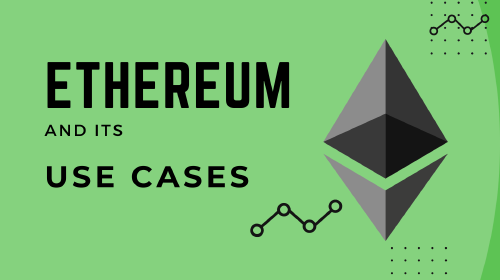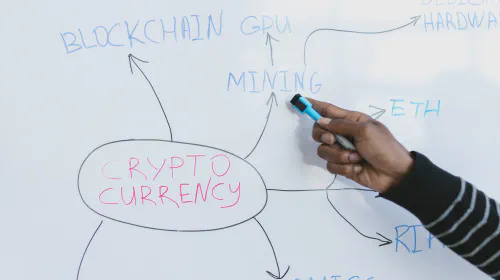How Do Ethereum Developers Make Money?
Salomon Kisters
Jan 25, 2023This post may contain affiliate links. If you use these links to buy something we may earn a commission. Thanks!
Ethereum arrived on the scene in July 2015, more than 6 years after the release of Bitcoin. It brought a new ecosystem based on smart contracts and decentralized applications that has become a model for recent blockchain projects.
Ethereum’s smart contract feature enables developers to create custom applications on the blockchain that offer timed rewards to stakeholders. Utilizing these features requires extensive coding knowledge of Solidity, Ethereum’s native programming language.
Because the blockchain space is relatively new, blockchain developers are highly sought after. And there are fewer developers available for Solidity.
With that said, Ethereum developers get paid handsomely for their work, despite the project being Open Source. And there are several ways they make money.
Read onwards to learn more about how they do this. For clarity, we refer to the main Ethereum blockchain, which is separate from the Ethereum Classic split in 2016.
What are the core features of Ethereum?
Before we understand how Ethereum sustains itself it’s important to understand what it brings to the table. Of course, being a blockchain, it has some features that are present in many blockchain projects.
Open Source Software
Like Bitcoin, Ethereum is Open Source software, meaning that its source code is available to the general public. Anyone can download it, modify it for personal use and suggest revisions for implementation in a new public build.
Native Cryptocurrency
Ethereum’s native token is Ether, designated as ETH. Ether has a floating market value based on supply and demand. It can be traded for USD through cryptocurrency exchanges.
Block Rewards
Ethereum has incentives for nodes that validate tractions. The transaction fee is paid in gas with a smaller denomination of ETH. The Gas reward depends on multiple factors, including the supply and demand of ETH tokens, network speed, and validation capacity.
So what makes Ethereum different?
Here’s what separates Ethereum from conventional blockchains like Bitcoin.
1. Proof-of-Stake (PoS) Consensus
Bitcoin uses a computationally expensive Proof-of-Work (PoW) protocol to validate transactions. A PoW consensus mechanism requires large amounts of energy, and hardware investments to cover the cost of mining cryptocurrency.
Ethereum, on the other hand, uses a Proof-of-Stake algorithm that rewards validators that have staked tokens on the network. A PoS consensus mechanism is faster and energy efficient.
It also encourages users to buy cryptocurrency on the blockchain, effectively creating a pool of resources that can stabilize ETH demand and supply. Since the September 2022 merge, the number of staking Ethereum addresses has significantly increased.
2. Programmable Infrastructure and DeFI
Unlike Bitcoin, Ethereum’s cryptocurrency is more than just a store of value for transactions. Ethereum is designed with programmable applications in mind. To support this feature, the Ethereum developers have created a programming language for the blockchain called Solidity.
Solidity enables developers to insert custom code to automate Ethereum transactions into timed contracts. The language has security and built-in fraud-detection features that provide a range of utilities beyond making trades.
Ethereum, therefore, functions as a utility platform that can support a wide range of industrial processes using ETH as a cost measure.
3. Creation of other Cryptocurrencies
Ethereum allows users to create new tokens for specific blockchain applications that can be used by a business entity. These tokens can be floated on exchanges after formal regulatory compliance and be traded like any other cryptocurrency in the market.
So How Do Ethereum Developers Make Money?
Now that you’re familiar with the key features of Ethereum, we can begin to understand how developers can monetize their work on it.
1. Premium dApps
The most direct way to make money is to create a premium decentralized application on the Ethereum blockchain. There are many possibilities for creating applications on Ethereum:
- Digital ledgers for financial or supply chain transactions
- Crypto exchanges services
- Healthcare services
- IoT-based monitoring services
- Games
- NFT exchanges
DApps open a way for developers to create SaaS products for a broad range of clients that can earn revenue through direct payments or subscription revenue. Subscription revenue can be usage-based (limited number of blockchain transactions incurred) or time-bound (restricting transactions within a specified duration).
2. Transaction Fees
Since the recent merge, Ethereum has moved to a complete PoS mechanism. This means that the main reward for validators is the gas fee for each transaction.
Because developers have to buy into Ethereum to make decentralized dApps, they will have an ETH stake on the blockchain. This allows them to passively earn cryptocurrency rewards by staying connected to a validation node.
Alternatively, developers can also utilize this feature for any transaction made through their application. The only requirement here is to understand the difference between their costs and the fees charged to customers.
Developers can cash out their holdings at any time, but this action will reduce their stake in the blockchain.
3. Cryptocurrency IPOs
As we mentioned in the previous section above, Ethereum can be used to create new cryptocurrencies. Ethereum developers commonly do this by bootstrapping new cryptocurrency projects and selling the created tokens on an exchange.
Placing coins on a crypto exchange is called an Initial Coin Offering. This works just like a stock IPO and can generate significant funds if enough buyers are interested in the project.
It’s important to understand that ICOs are also risky. Not every coin will succeed in the market. So if you want to plan an ICO for a new Ethereum-based token, here are 3 things you should keep in mind:
- The main functionality of your application. This should provide enough value to interested parties and intended users. Transparency and clarity are the names of the game.
- Network operation and access. Your project should be reasonably accessible to the intended users. It makes little sense to launch a coin on a blockchain that no one will be able to access. Most blockchain projects work with public access in mind. Therefore, scalability and reliability are important factors to consider. You should be ready to rigorously test the functionality on the mainnet.
- Distribution of profit. If you have private backers or token holders, you should clearly state how the profit will be distributed between them and public buyers.
4. Create Digital Goods
Ethereum is a versatile blockchain. Developers can create tokens like Non-Fungible Tokens (NFTs). NFTs are like cosmetic digital goods that can be used as collectibles. NFTs can be rewarded in games and promotional events (concerts and community gatherings).
NFTs can be traded in online marketplaces for ETH or fiat currency. Some NFTs may see an increase in their market value over time.
5. Advertising
While in-app advertising is uncommon in dApp, it is possible to make money using the power of an online advertising network. Many dApps are based on web or mobile interfaces with built-in ad support.
So just like conventional applications ad revenue can become an additional revenue stream for an Ethereum app.
6. Funding and Donations
If application development is based on open-source software, then it is customary to involve volunteer work.
However, some tasks can become complex and require expertise to work on. Scaling an application is a common scenario where complexities can arise.
Organizational funding helps developers kick-start a project while also allowing them to work with talented individuals who can help communities to reach development milestones.
Final thoughts
With the rise of blockchain technology, businesses are increasingly becoming interested in harnessing its power for several industrial use cases. After Bitcoin, Ethereum has already made a name for itself, and it is the second-largest blockchain by market capitalization.
Where Ethereum does differ is the ways developers can monetize the blockchain. We are already seeing an explosion of decentralized applications pushing the limits of the internet.
As long as developers have ways to sustain themselves through its ecosystem, Ethereum will continue to thrive. Currently, there is no end in sight, and the future looks promising.
Stay informed with the latest insights in Crypto, Blockchain, and Cyber-Security! Subscribe to our newsletter now to receive exclusive updates, expert analyses, and current developments directly to your inbox. Don't miss the opportunity to expand your knowledge and stay up-to-date.
Love what you're reading? Subscribe for top stories in Crypto, Blockchain, and Cyber-Security. Stay informed with exclusive updates.
Please note that the Content may have been generated with the Help of AI. The editorial content of OriginStamp AG does not constitute a recommendation for investment or purchase advice. In principle, an investment can also lead to a total loss. Therefore, please seek advice before making an investment decision.

Who Runs Ethereum? Understanding Decentralized Governance
Ethereum has a decentralized governance model, with stakeholders like Ether holders, developers, and miners contributing to decision-making.

Ethereum: Decentralized Blockchain Platform & Use Cases
Learn about Ethereum, a decentralized blockchain platform with smart contract functionality. Explore its use cases, how to buy Ether, and the benefits of OriginStamp.

What Is Ethereum Classic, and Does It Have a Future?
Most people confuse Ethereum and Ethereum Classic to be the same thing. They are not.
Protect your documents
Your gateway to unforgeable data. Imprint the authenticity of your information with our blockchain timestamp